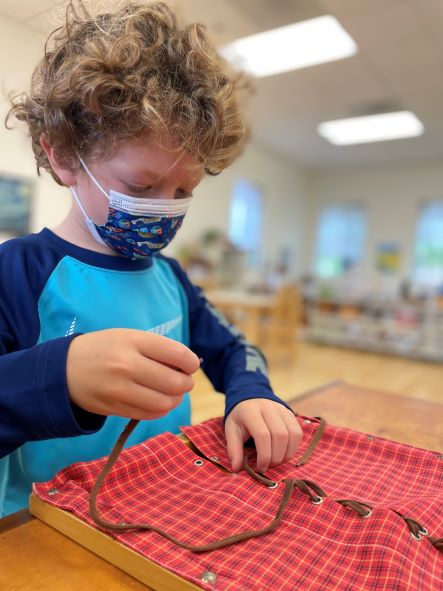(858) 759-0631
The Montessori Method Provides Cues and Activities to Help Kids Learn to their Strengths
Children learn differently.
Some kids need materials to touch while others need to hear or see. Perhaps that’s one reason why a Montessori school has few fidgeting, antsy students. Why? They are engaged.
Physical, kinesthetic cues and activities can help kids learn because students learn better when they can experience or touch. For example, when the Montessori child writes fractions, teachers do not exclusively use pictures.
Let’s say we are discussing the concept of fractions. What is one-fourth, we ask? Someone with strong visual skills can learn with shapes. By letting children explore something divided into four pieces or one of four pieces via shapes, they discover that two-fourths are the same size as one- half.
The Montessori child learns to explore with touch. Talking about it and touching it helps you learn the concept in addition to symbols. So, first and foremost, students learn to understand the underlying elements of concepts. And, concepts are the fundamental building block of learning more complex academic tasks.
Visualization and Touch
When it comes to the other senses, if we’re teaching a concept that has to do with your ears, you need to hear it. Introducing all your senses allows your body and brain to process.
Children fire neurons via their senses. The more we incorporate these senses, the more we understand—and that neural information pathway helps learning go faster. We grow the brain by firing those synapsis via the pathway. The more normal students’ eyes, hands and ears are engaged, the faster they’ll learn and the faster they will become gifted students.
We stimulate the brain, often by seeing, hearing and drawing. As a result, Montessori preschool and elementary students achieve a muscle memory—rather than watching a parent silently holding flashcards. Why? Seeing it is one thing, but hearing and drawing helps us learn.
Proprioception
Proprioception is the concept of knowing where your body is in space (body awareness) and the ability to safely maneuver around your environment. Kids who fidget might struggle with their proprioceptive sense and therefore seek stimulation through fidgeting. In order to support this child, they need to be engaged more. The Montessori child has that need fulfilled. With movement, it helps kids grasp what they’re doing by solidifying their learning via neurons. Every usage strengthens that ‘road;’ ultimately, they can read more quickly via the training they undertake with our teachers. Using movement, the body and hands as part of a lesson helps solidify learning abstract concepts and processes.
An artist once stated, “A picture may be worth a thousand words but painting the picture is worth a thousand memories.” In today’s highly visual world where pictures rule and reading runs a poor second, Montessori preschool and elementary students learn concepts that are reinforced by using more than just one sense. Perhaps that sounds like common sense, but how many public schools are focused on concepts toward understanding rather than focused on rote memorization?

